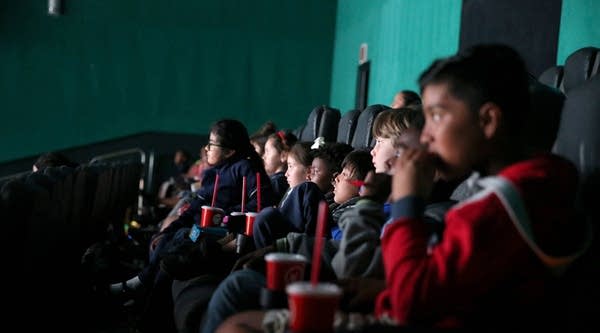Why getting your movie into theaters can be difficult
Netflix has distribution power indie filmmakers may not have access to.

Making a movie is an incredibly difficult, multimillion-dollar effort. Getting it in on the silver screen so people can watch it is just as challenging.
Director Steven Spielberg recently received backlash after arguing that filmmakers should prioritize the “theatrical experience” and trying to block Netflix content from being considered for the Oscars.
He plans to propose rules that would force streaming services to put more of an effort in theatrical distribution. Right now, a film has to play in theaters for at least one week before the end of the calendar year to be eligible for an Academy Award.
“Once you commit to a television format, you’re a TV movie,” Spielberg said in an interview with ITV News last year. “You certainly, if it’s a good show, deserve an Emmy, but not an Oscar.” He’s also stated in the past that he loves TV, and thinks “some of the greatest writing being done today is for television.”
Spielberg’s proposal comes after the Netflix film “Roma” snagged three Oscars at this year’s Academy Awards, including one of most prestigious prizes: best director.
In response, filmmakers have expressed the challenges they’ve faced in getting their films in the theaters.
Julie Dash, a film and TV director who’s made the films “The Rosa Parks Story” and “Daughters of the Dust,” wrote on Twitter that after five films for cable, only one went theatrical.
“Smaller films are often put into smaller theaters, where many people don’t see them,” tweeted Nijla Mumin, an indie filmmaker.
Netflix Film also joined the conversation, and tweeted that it loves “access for people who can’t always afford, or live in towns without, theaters” and “letting everyone, everywhere enjoy releases at the same time.”
“[Distribution] is really the power center and the most profitable part of the business, and yet it’s the least understood,” said Rodney Hill, an associate professor of radio, television and film at Hofstra University who’s worked for years in film distribution and marketing. “It’s like any other business. Like in retail, you have the store, you have the people who make the products. But there’s that middle man, the distributor, that gets that product into all sorts of stores around the country.”
How distribution works
Movie distributors reach out to theater owners and iron out the details of their agreement, like how much money goes to the theater and how much goes to the distributor, according to Patrick Corcoran, vice president and chief communications officer of the National Association of Theatre Owners. Some well-known distributors include Warner Bros. and Sony Pictures.
The “90-10 deal” is a common arrangement for the first week, where 90 percent of the revenues from the box office goes back to the producers and 10 percent goes to the theater, according to Hill. Afterward, the deal might get renegotiated week by week, with more of the revenue shares going to the theaters.
“The theaters and the distributors need to know that they will be able to make a return on their investment. And obviously films that have big budgets with star casts are all going to have a much better chance at being able to be picked up for theatrical distribution,” said Michele Meek, a filmmaker and co-editor of the book “The Independent’s Guide to Film Distribution.”
Prior to the ’50s, studios owned their own theaters where they could decide what was shown. But in 1948, in what’s known as the Paramount Decision, a U.S. Supreme Court ruling led the major studios to give up control of their theaters. Meek said she thinks the system that’s replaced it isn’t much better or advantageous for indie films.
“Most of the big studios have their own distribution companies, so their films are guaranteed ‘distribution,’ and when they make deals with the theaters, they do it in packages. So if the theater really wants this film, they’ve also got to take that film,” Meek noted. “And an independent filmmaker … or an independent distributor sometimes does not have the opportunity to make those kinds of negotiations.”
Richard Abramowitz, CEO of the independent distribution and marketing company Abramorama, said he doesn’t think movie theaters will ever die out.
“I am convinced — and not only because it’s self-serving because this is what I do — that people will continue to gather in dark rooms to share the experience of the kind of storytelling that only movies can provide,” Abramowitz said. “I do believe that people still want to go to go to a big, dark room with strangers and be scared or be made to laugh or be made to cry and be made to feel a variety of emotions. People sat around the fire and told stories, and it still happens in the same way.”
Meanwhile, Meek said she wants people to continue go to the theater and is nostalgic for that viewing experience like everyone else. But streaming can open the doors for filmmakers who are underrepresented in the industry.
“I … recognize that there are a lot of independent and female and minority filmmakers who have never really been able to break into that traditional system. And if this new model allows for more variety, then I’m all for it,” Meek said.










